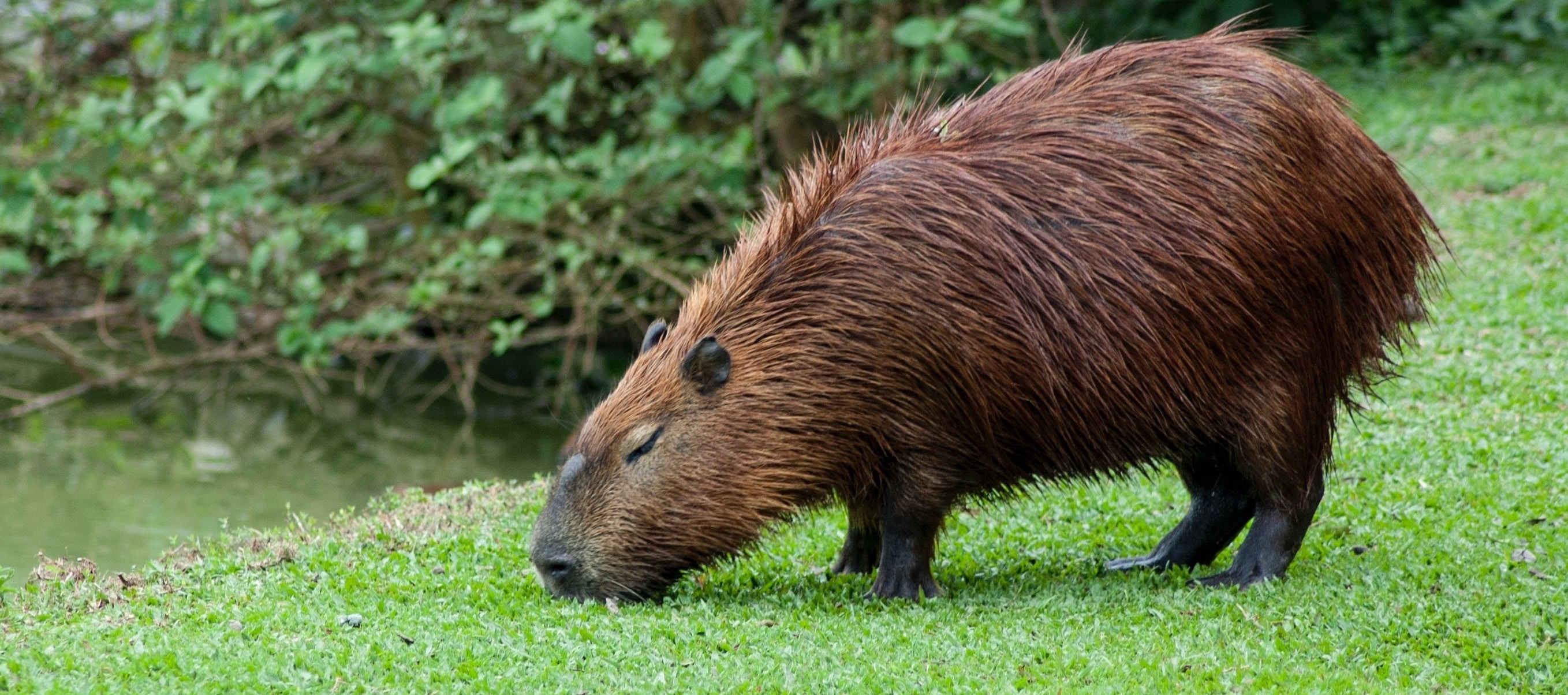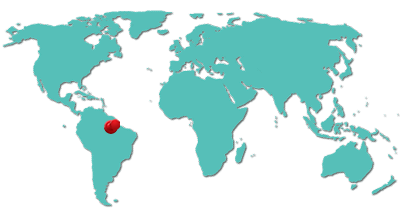1 / 3

Capybara

In a Capybara herd it is only the dominant male that has the breeding rights to the females, and although it can occur all year round depending on the conditions, the breeding season tends to be during the rains in April and May. After a gestation period that lasts for around five months, the female Capybara gives birth to between 1 and 8 pups on land. Capybara young are very well developed at birth and not only have all their fur and can see, but are also able to run, swim and dive within hours of birth. The female rejoins the main group within hours with her newborn offspring, which begin to eat grass after about a week (although they will continue to suckle milk from their mother until they are around four months old). The Capybara tends to live for up to 10 years in the wild and slightly longer when kept in captivity.
The Capybara is a herbivorous animal that only eats plant matter in order to acquire all of the nutrients it needs. The diet of the Capybara is mainly made up of grasses and aquatic plants, along with fruits and berries and the occasional munch on soft tree bark. Despite spending a number of hours during the night grazing, the Capybara is quite fussy with around 75% of their diet involving between three and six different species of plant. Like all other species of rodent, their two front teeth grow continuously throughout their life meaning that they must gnaw and chew their food to grind them down which they do in a back and forth motion rather than from side to side. They are also known to both regurgitate their food in order to chew it again (much like a Cow) and also eat their own droppings which help to break down the cellulose in the grass, along with aiding their digestive system in general.
The Capybara is a large, semi-aquatic rodent that is found inhabiting the water-logged regions of Central and South America. Closely related to other South American rodents such as Chinchillas and Guinea Pigs, the Capybara is the largest rodent in the world weighing up to 75kg and measuring nearly 1.4 meters long. Despite their enormous size though, these mammals have adapted well to life in the water and have a number of distinctive characteristics that aid their amphibious lifestyle, including the webbed skin between their toes which is particularly helpful when swimming. Interestingly enough, the common name of the Capybara is thought to mean "Master of the Grasses", whilst its scientific name comes from the Greek word for water hog.
The Capybara is a heavy, stocky-looking animal with a short head and muzzle in comparison to its body and hardly any tail at all. They have short but sturdy limbs and hoof-like claws on their toes which along with the webbing, helps the Capybara both when negotiating the slippery banks and with swimming and also prevents the Capybara from sinking too deeply into the surrounding mud. Their coarse, short fur is pale to dark brown in colour with varying tinges of yellow, red and grey and is perfectly designed to dry out quickly once the Capybara is back on land. One of the Capybara's most distinctive features is the fact that their eyes, ears and nostrils are all positioned on top of its head meaning that they still have excellent sight, sound and smell whilst in the water.
The placement of these features also means that when threatened,
the Capybara can retreat into the water only leaving these parts of its body exposed to hide from potential predators.
The Capybara is found throughout a variety of habitats in Central and South America providing that there is a constant source of standing freshwater. They are found in Panama, Colombia, Venezuela and Peru, down through Brazil and Paraguay and into northern Argentina and Uruguay where they are most commonly found in swamps, marshes, rivers and lakes. The Capybara can be found inhabiting grassy plains and even in rainforests where they occupy territories in herds, with these areas reported to be adequate territories year round even with the differing seasons. During the dry season the Capybara must have water and areas where they are able to feed (often small sandbars in the water), but in the wet season when the area floods they must still be able to graze which they often do on the grassy banks.
The Capybara is a very sociable animal that tends to inhabit densely vegetated areas close to water in herds of around 20 individuals, which are usually made up of a dominant male with a number of females and their young. Capybara herds occupy very stable home ranges that are known to vary in size depending on the size of the herd to ensure that there is enough food, and although small parts of their territory may overlap those of another herd, they will tend chase intruders off their patch. The Capybara actually sleeps very little, preferring instead to doze whilst resting during the morning in thickets on the banks, or wallowing in the mud and water when cooling down in the heat of the midday sun. They begin to emerge onto land in the early evening when they graze on grasses and aquatic plants which the Capybara will continue to do throughout most of the night.

Today, the Capybara population throughout Central and South America remains fairly stable and it is because they are still common in much of their natural range, that the Capybara is listed as being of Least Concern from becoming extinct in their natural environments in the near future by the IUCN Red List. Population numbers in certain areas however, have declined due to hunting and others are affected by loss of their natural habitat both from deforestation and increasing pollution levels in the water.